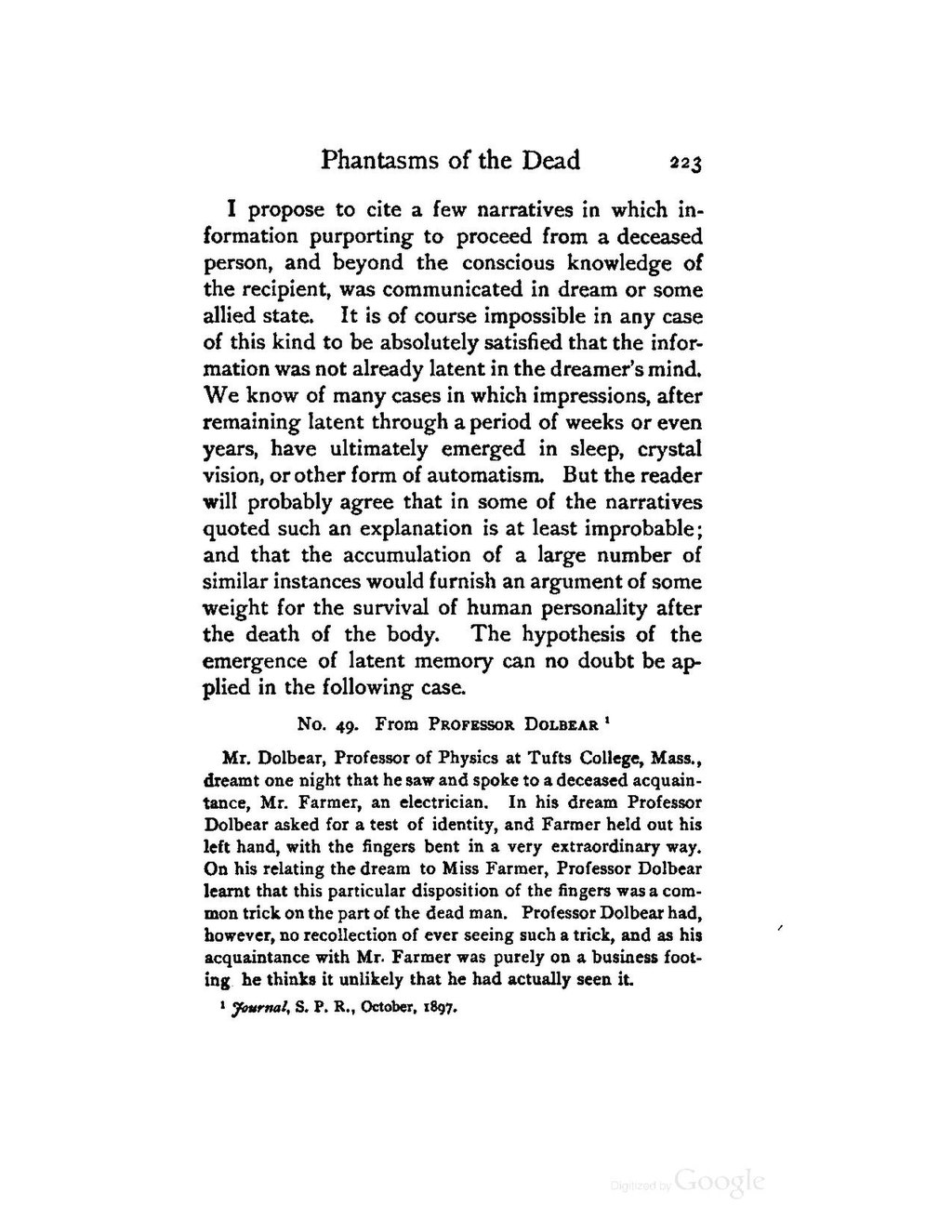I propose to cite a few narratives in which information purporting to proceed from a deceased person, and beyond the conscious knowledge of the recipient, was communicated in dream or some allied state. It is of course impossible in any case of this kind to be absolutely satisfied that the information was not already latent in the dreamer's mind. We know of many cases in which impressions, after remaining latent through a period of weeks or even years, have ultimately emerged in sleep, crystal vision, or other form of automatism. But the reader will probably agree that in some of the narratives quoted such an explanation is at least improbable; and that the accumulation of a large number of similar instances would furnish an argument of some weight for the survival of human personality after the death of the body. The hypothesis of the emergence of latent memory can no doubt be applied in the following case.
No. 49. From Professor Dolebar[1]
Mr. Dolbear, Professor of Physics at Tufts College, Mass.,dreamt one night that he saw and spoke to a deceased acquaintance, Mr. Farmer, an electrician. In his dream Professor Dolbear asked for a test of identity, and Farmer held out his left hand, with the fingers bent in a very extraordinary way. On his relating the dream to Miss Farmer, Professor Dolbear learnt that this particular disposition of the fingers was a common trick on the part of the dead man. Professor Dolbear had, however, no recollection of ever seeing such a trick, and as his acquaintance with Mr. Farmer was purely on a business footing, he thinks it unlikely that he had actually seen it.
- ↑ Journal, S. P. R., October. 1897.
